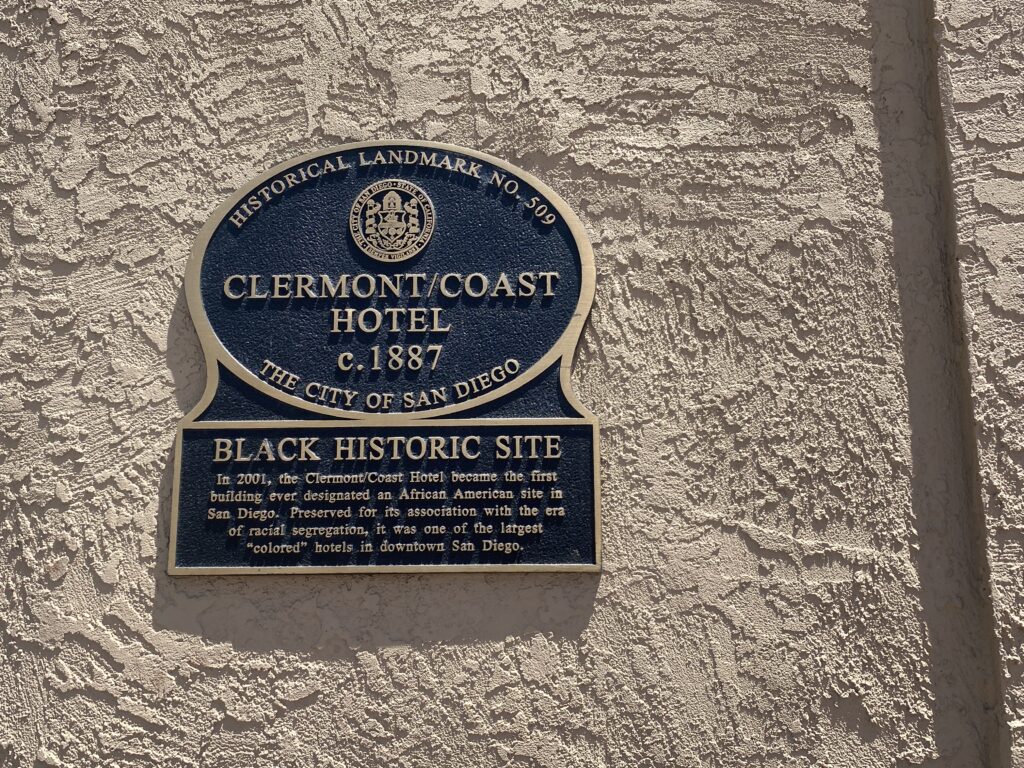No products in the cart.
Landmarks
From Blighted to Historic – Better Than Ever
Clermont/Coast Hotel
1886-87
501 7th Avenue
Architectural Style : Commercial/Lodging Architect: Unknown
Although it had a rather inauspicious beginning, suffered through multiple owners, and narrowly escaped the wrecking ball, the Clermont Hotel has survived and is now once again flourishing.
When originally opened in 1887, the building was known as the Occidental Hotel and was listed as a lodging house. It was an attractive three story, concrete and brick structure with a modified mansard roof. Below the roofline was an ornamental frieze and supportive lentils. The second and third stories each sported rows of seven double sashed windows with wooden frames. The third floor windows, additionally, were capped with modest cornices. The first floor featured a wooden door in the center, flanked on the left with two double sashed windows and on the right with one window. This gave the facade a symmetrical appearance. The hotel, with its 50 rooms, was surrounded by a blacksmith shop, a woodworking and painting store and Diamond Feed and Livery Yard in the rear. By 1888, a junk store and a carriage and hay seed shop had joined the surrounding neighborhood.
During 1889, the hotel had become the Union House, and remained such until 1895. By 1901, it was finally known as the Clermont. It continued to be listed as a lodging house and tenement until 1921, but the Diamond Feed and Livery Shop had been replaced by a vacant lot. Mamie and Eugene Deburn purchased the property in 1922, and as Mamie was said to be of mixed race, African-Americans were able to stay at the hotel during their ownership. However, no occupants were listed in the Colored Directory of 1926.
Various individuals owned the building over the ensuing decade, and the 1935-36 Directory of the Colored Residents of San Diego, California lists four residents of color. In 1938, Charles T. Robinson became owner of the Clermont, and solidified its reputation as a black segregated hotel. He and Gerda Robinson held title through 1946. More importantly though, the San Diego County Telephone Directories listed the Clermont as a “Hotel for Colored People.” In 1954, the listing changed to read “Perm and Transient $1.00 Day & Up, Management by Rae L. Reid.” This paved the way for low income housing. By 1956, the Clermont boasted regular advertisements rather than just a single line. By 1961, the Clermont had become the Coast Hotel, but by 1965 it was again the Clermont/ Coast, as it remains today. After once again becoming the Clermont, advertising was again reduced to one line and no longer identified as a “Hotel for Colored People.”
By 2000, the Clermont was a poorly aging “halfway house.” This made it a prime target for developers, who wanted to raze the old building and make the property into a parking lot. This was an especially attractive proposal, as the soon-to-be opened Petco Park was only two blocks away. Before razing such an old structure, a study referencing historical or architectural significance was required by the Centre City Development Corporation (CCDC). After an extensive study, they concluded that no historical events or persons of significance were associated with the building. However, the Historical Resources Board, appointed by the City, pursued identifying the Clermont as an African American cultural site. The premise was that though never black owned, the hotel catered to blacks during the era of segregation from the 1920s through the 1960s. The social significance was the mitigating factor. Also, the hotel occupants continued to be primarily black throughout the 1980s.
On December 20,2001, the Historical Resources Board was to meet to decide on the designation of the Clermont as a historical landmark. A demonstration, led by the Gaslamp Black Historical Society, was held in front of the hotel. It culminated in a march to City Hall. While people shouted “Keep our history” and “Keep these walls up.” the HRS voted unanimously in favor of the historic designation. In November of 2005, a bronze plaque was placed on the venerable old building , paid for by the new owners.

The Clermont now serves as a low income residence for any renters in need of affordable housing in a diverse and vibrant community.
Sandee is the Historian and Lead Tour Guide for the Gaslamp Quarter Historical Foundation. She can be reached at [email protected].

